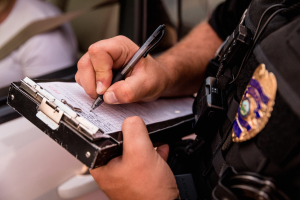Law enforcement decision support and evidence

Imagine that a swat team is being guided by HQ based on their bodycam video feeds as they run into a room filled with armed criminals. Being able to pinpoint the identities and positions of everyone in the room as quickly as possible can be the difference between life and death. What happens if a hidden opponent goes undetected or a hostage is mistaken for one of the captors in the heat of the moment?
Security camera feeds can also be used for live surveillance and for analysis and evidence after the fact. What if you’re analyzing the surveillance footage and miss an important detail because of poor video quality? Or what if you’re trying to identify a criminal but the image is incredibly fuzzy just like on TV shows such as America’s Most Wanted?
However, you don’t necessarily want permanently enhanced video quality in law enforcement. Enhanced video feeds with special lighting, zoom, object tracking, image stabilization and similar finesses may be useful out in the field in the moment., But they could end up making a video seem less authentic in court after the fact. Remember that lawyers must establish the relevance and authenticity of video evidence or else it can’t be used.
There’s no one-size-fits-all solution for law enforcement video feeds – sharpened video in the heat of the moment can save lives while raw, authentic footage can be decisive evidence for trials later.



